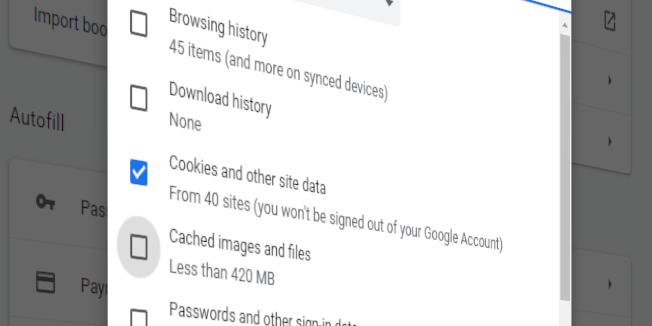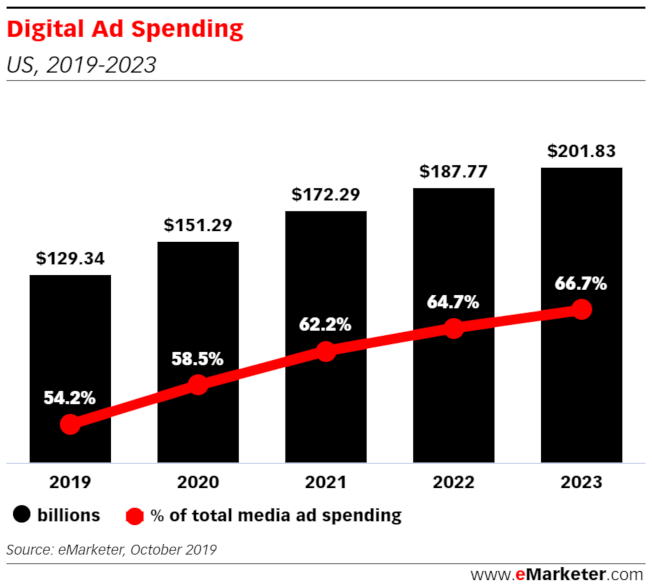
Amplify your reach and drive results with our tailored paid media strategies.

Cookies enable various experiences we’ve come to expect as users of the internet: remaining logged in to our email accounts; keeping our preferred settings on the sites we visit most; our favourite brands remembering our shipping address for purchases.
Cookies have also been the primary mechanism that allows marketers to find users based on their online traits and behaviours and deliver advertising to them on the web which, in turn, provides more relevant advertising to individuals. That’s all changing—and rapidly—with many industry trades declaring, finally, the “death of the cookie” despite its long reign at the top of the digital marketing tracking hierarchy for 20+ years.

In today’s world, privacy—including being tracked by third-party cookies—has come to the surface as a top priority among internet users. We have written about it following the implementation of GDPR in the EU, and more recently after Apple’s ITP2.2 announcement. Privacy is actually Apple’s key differentiator in a market where its competitors include similar-but-not-the-same companies like Google. It was natural that they would lead the charge on cutting out cookies, as they had far less financial interest in cookie-based advertising than “the other guys”. In fact, they’ve stated that “privacy is a fundamental human right“.
Following the demand from consumers (and Apple’s lead), Google is also getting into the cookie-less conversation with its February 4 Chrome 80 release. With this release, Chrome will no longer send third-party cookies across sites unless developers have specifically coded which cookies can work/are allowed across websites.
While we, as consumers, love that the tides are turning and we’re gaining more control over our digital privacy, that very same appreciation for privacy is likely going to change the experience we’ve come to expect, as consumers, from brands’ advertising. The problem with granting full, cookie-less privacy is that we, as users want to have our (ahem) cookies and eat them too. Full blocking of all cookies means we’re back in the dark ages, where we’d have to log into everything, all the time, and type our address every single time we buy something online—and all digital ads revert to barely-targeted, not-personally-relevant intrusions in our internet lives. Doesn’t it?
Well… not exactly.
In fact, marketers have been dealing with the crumbling cookie (hah!) for some time already. One study by ad server FlashTalking found that a whopping 64% of cookies were blocked or deleted by browsers—in Q4 of 2017! We’re two years past that, but the decline of cookies doesn’t seem to be stopping anyone from spending in digital:

Agencies, in-house brand marketing teams, publishers, ad tech, and ad platforms have all been thinking through the decline of cookie-based marketing. There are even multi-disciplinary think-tanks dedicated to solving how we combine good advertising with good privacy policies.
Cookies have been the go-to solution, but several other options exist as well. Many are already being utilised—which means digital is still effective—and align well with the growth we’re seeing in digital ad spend.
So, what are the options and how are marketers proceeding?
Fingerprinting is a methodology for probabilistically identifying a user without cookies by combining a series of signals that, when combined, are likely to identify a unique user and assign that user a hashed user ID. These non-cookie signals are things like device, operating system, browser, IP address, time zone, and language settings.

Because this tracking isn’t cookie-based, many ad tech companies went all-in on fingerprinting as a solution to cookie death. It’s easy to find ad tech providers that will allow you to target with fingerprinting, and with generally good results compared to cookie-based targeting.
However, given the larger trends in privacy, such as GDPR and the forthcoming CCPA, it’s probable that fingerprinting will go the way of the cookie. And probably sooner, rather than later: trends indicate that the number of new companies coming out with these types of targeting models are on the decline. For now, though, it’s not restricted by either law or browsers, so this is one route to consider in the immediate term. A cautious advertiser, however, would look to this as an interim solution while still keeping a future focus on planning for alternate solutions.
Many people (including my grandpa) would tell you “if it ain’t broke, don’t fix it”. And honestly, sometimes a good ol’ contextually targeted and/or native ad will do well for your campaign goals. Native ads and contextual ads tend to perform well because the user is (usually) actively engaged with the content that the ad appears on/in. And if the ad content is relevant to the editorial content the user is engaged with, they’re more likely to find it relevant to them at that time than if the ad appeared out of context, on a different property, or inside different content.
However, advertisers shouldn’t expect these ads to drive highly efficient direct response goals. Native and contextual are solid options when you’re looking for upper-funnel KPIs such as increased reach and frequency.
One of the most effective ways we continue to drive outrageous performance for our clients is through the combination of human and machine. Again, part of this does involve going back to basics, but with different reasons for doing so—and different expected outcomes.
Deep rigour in ad ops is the foundational element: you must start with the creation and trafficking of campaigns sliced by geography, publisher, placement, creative, user intent, objective, etc. Then you turn those campaigns over to machine learning, and allow it to find the common patterns that drive performance.

It’s a lot of legwork on the front end, but breaking apart campaigns in this way from the beginning gives the us more information than we’d have otherwise. And this solution provides no intrusion on privacy and no risk of losing out on performance due to the lack of cookies.
Many of Google’s advertising releases in the past year have been founded on AI-driven pattern recognition and optimisation. However, Google does not recommend the up-front ad ops work, but would rather have you load everything together and let AI sort it out—giving Google more information about what works and what doesn’t, but making that information harder to discern for the advertiser. This is where good agency partners come into play, guiding brands through all the critical changes in the publisher, vendor, and ad tech space that happen constantly.
Subscribe to our monthly newsletter.
The universal ID has been heralded as the next best solution to manage identity and targeting as the acceptance of third-party cookies continues to decline. A universal ID is an identifier used by everyone (Supply Side and Demand Side platforms) for identification and targeting. This removes the need for the “handshake” or third-party cookie sync that happens when a user moves from one domain to another and so, therefore, limits the amount of lost information that occurs as more and more third-party cookie-defeating updates roll out.
There are three major players in the universal ID space now: The Advertising ID Consortium, the Trade Desk’s Unified ID solution, and DigiTrust, which started with the IAB. The good thing about these universal ID solutions is that they create what is essentially a first-party cookie that’s the same among all partners included in the solution—it provides one identifier across all partners. This prevents the need for the new coding rules that will soon be in effect with the Chrome 80 release, and makes it easier to identify the same user across multiple platforms.

The bad thing about these universal ID solutions is that they still only work within the publishers and platforms that have joined up—they will not work for users that cross into the walled gardens of Facebook or Google. In essence, these new universal ID solutions are each a new walled garden; the only difference is that the variance of players in each have a much larger inventory across the web. Therefore, the reach you can get with a universal ID from a platform like the Trade Desk can actually be quite significant given its wide array of partnerships with publishers and DSPs.
Another way the universal ID is being tackled is through vendors that provide end-to-end marketing services, such as Adobe. Adobe’s Identity Service, for example, connects a single user across every interaction it has within an Adobe-enabled environment. So if a user sees an Ad Cloud-generated ad while at home on their mobile device then visits a site on their desktop at work—a site that’s personalised using Target and tracks behaviour via Analytics—will be captured and reconciled as the same user.
This is great for measurement, attribution, and targeting in Audience Manager and Ad Cloud. It is still cookie-based, but these are now first-party cookies, and so the effect is the same as the universal ID solutions mentioned previously. Adobe becomes, essentially, another walled garden but with reach into its partner networks via Ad Cloud.
So, with all that talk of walled gardens, what’s to be done? Well, the largest of the walled gardens believes they may have a solution with clean rooms. The phrase “clean room” brings to mind a sterile, locked down environment—and that’s exactly what it is. These are places where the giants like Amazon, Facebook, and Google share aggregated customer data with advertisers (usually via neutral third parties), allowing them to blend their first-party data with the aggregated customer data for a rich view of their ad targeting—which in turn allows them to see where users may be getting over or underserved, and to take those insights back for future planning.
If you’re thinking “this sounds like digital marketing panacea!”, well…. probably not. Though advertisers can access the data, that data can NEVER leave the room. So, though the insights are there to be had, an advertiser can never make use of any actual data for future advertising campaigns. That fact, combined with the significant cost, is likely why adoption has been low, and is primarily being leveraged by major holding companies (in aggregate) and large advertisers such as Proctor & Gamble.
Given all the above options, the best and most relevant way for brands to understand users—and pay off their intent at every stage of their decision journey with relevant touch points—is to leverage the heck out of its own first-party data. And, indeed, first-party cookies aren’t dead yet. A brand that can get users to authenticate on their site, in app, via loyalty programs, etc., has a very clear view of that user’s behaviours and actions. It can understand their needs and determine what marketing mix has led to desired outcomes.
Are you using a DSP or publisher that has a black box for ad serving and user data? Are you buying media without full transparency into each line item of the tactical media plan and the costs associated with each? Do you have an agency managing your ad buying and ad serving from their own accounts, rather than tying your own owned accounts to theirs? If so, it’s time to rethink that approach.
At DAC, we believe transparency is always the best option. Our clients know that their data belongs to them, and we work with them hand-in-hand to drive outrageous performance based on the data that is available—and what can be understood through analytical modelling.
In the end, the cookie has been on the decline for a while already and digital marketing is no worse for the wear. However, in digital, it pays to look ahead. As privacy concerns continue to be at the fore of the conversation both for marketers and the general public, it will require marketers to shift their thinking and approach.
Amplify your reach and drive results with our tailored paid media strategies.
Amplify your reach and drive results with our tailored paid media strategies.
Subscribe to our monthly newsletter.